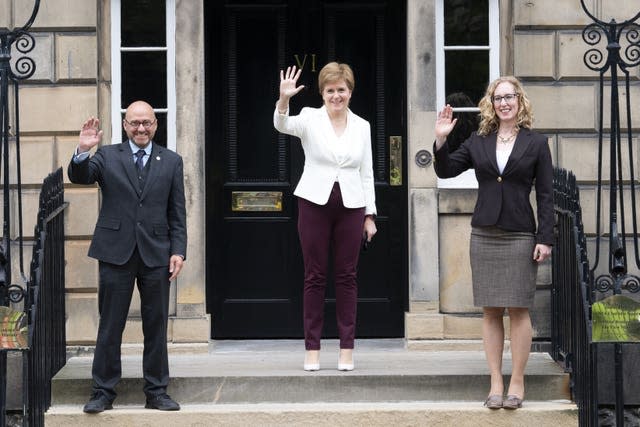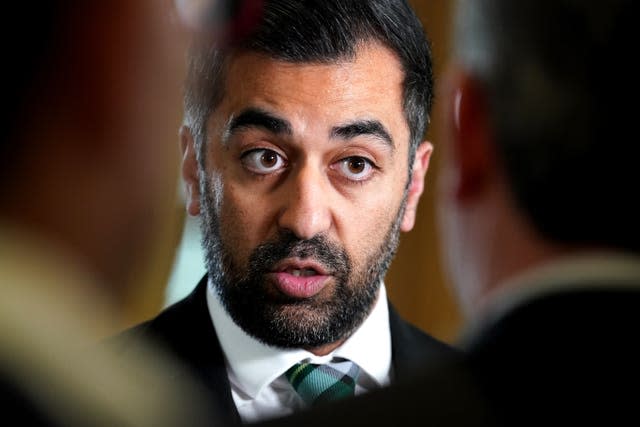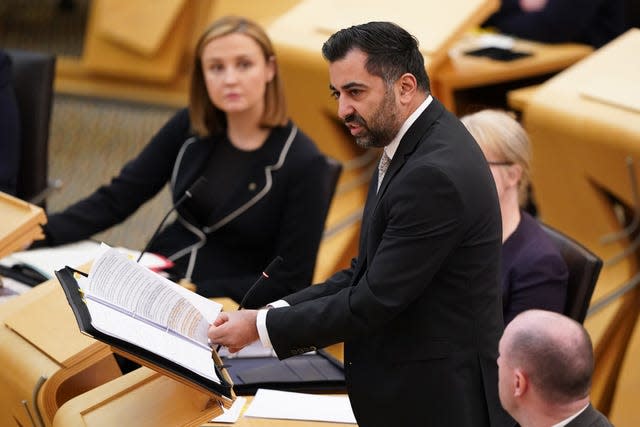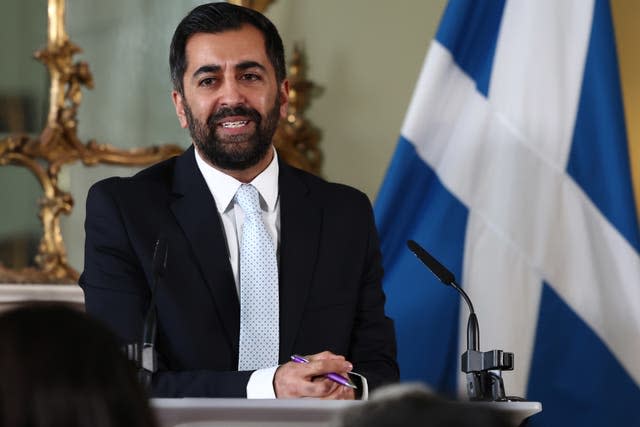What next for the Scottish Government after end of Bute House Agreement?
The Bute House Agreement is over and Humza Yousaf is facing a motion of no confidence in him.
Scotland’s First Minister announced the powersharing deal between the SNP and the Greens has ended at his behest and his party will now rule as a minority administration.
Here, the PA news agency goes over the agreement and what the end of it could mean.

– What was the Bute House Agreement?
After the May 2021 Scottish Parliament election, Nicola Sturgeon’s SNP emerged as the largest party but without an overall majority.
The Scottish Greens saw their best-ever result with eight MSPs, enough to give the two pro-independence parties a working majority at Holyrood.
Negotiations began soon after the election and the deal cleared its final hurdle at the end of August 2021 when Green members voted to approve it – with 1,169 members (83%) backing the deal, 234 voting against and nine abstaining.
The Bute House Agreement takes its name from the First Minister’s official residence in Edinburgh, where the draft deal was signed.
Ms Sturgeon said the deal was a “historic” moment, and that Green co-leaders Patrick Harvie and Lorna Slater were “tough” negotiators.
– What did the two parties agree to?
Green co-leaders Patrick Harvie and Lorna Slater both entered government as ministers. Their portfolios included tenants’ rights, the heat in buildings strategy, the circular economy and biodiversity.
Alongside the text of the Bute House Agreement, which set out the expectations for each party, a shared policy programme for their time in Government was published.
This contained a number of environmental policies, a commitment to implement rent controls, and a “fair fares review” for public transport.
The agreement also set out 10 areas where the two parties could continue to disagree.
These included aviation policy, green freeports, the defence sector and economic principles related to concepts of sustainable growth.

– What happened on Thursday?
First Minister Humza Yousaf called Mr Harvie and Ms Slater into his residence at Bute House and told them he was ending the deal.
In a hastily-arranged press conference later than morning, he said the agreement had “run its course”.
He told journalists the decision meant a “new beginning” for his party in Government.
– How will the Scottish Government now operate?
The SNP will rule at Holyrood as a minority administration, requiring it to work with other parties to pass legislation and – importantly – its budgets.
In the last parliamentary session, the Greens acted as bedfellows to the SNP and were able to extract key concessions – including free bus travel for under-19s, which was later extended.

The Greens could return to this type of unofficial arrangement with the SNP – as the First Minister has suggested – but it would likely cost the SNP dearly to bring in support from a party with whom it has just severed ties.
The SNP currently has 63 MSPs – two short of a majority. They could turn to all of the parties in Holyrood for help in passing legislation – except the Alba Party which only has one MSP – but would no doubt need to sweeten the deal.
– How did the Greens react?
The Scottish Greens were outraged by the decision to end the agreement, describing it as an act of “political cowardice”.
Speaking to journalists at a Holyrood press conference after the deal was scrapped, Mr Harvie even suggested the First Minister may not last until the next budget to make a deal with his party.

– Why is Humza Yousaf now facing a vote of no confidence?
The collapse of the powersharing deal with the Greens means the SNP can no longer rely on their support in key votes at Holyrood.
The Bute House Agreement had committed Green MSPs to backing the Government in confidence votes, but as the deal has now ended, the Tories are seeking to exploit this.
Scottish Conservative leader Douglas Ross announced the Tories would bring forward a vote of no confidence in Mr Yousaf, who he branded as a “weak” and “failed” First Minister.
If such a vote passed, it would mean Parliament no longer has confidence in the leadership of Mr Yousaf, which would then place him under massive pressure to resign.
After considering how to proceed on Thursday afternoon, the Greens said they would vote in favour of the no-confidence motion.
Scottish Labour and the Lib Dems have also said they will back the motion, meaning there are 64 out of Holyrood’s 128 MSPs who do not support the First Minister.
It means Humza Yousaf’s political future rests on a very tight vote as he would be under massive pressure to resign if the confidence vote goes against him.
– When will the confidence vote take place?
The timing of the no-confidence vote will be decided by Holyrood’s business bureau but is likely to be next week. The Scottish Parliament is currently considering how the end of the Bute House Agreement will impact parliamentary business.


